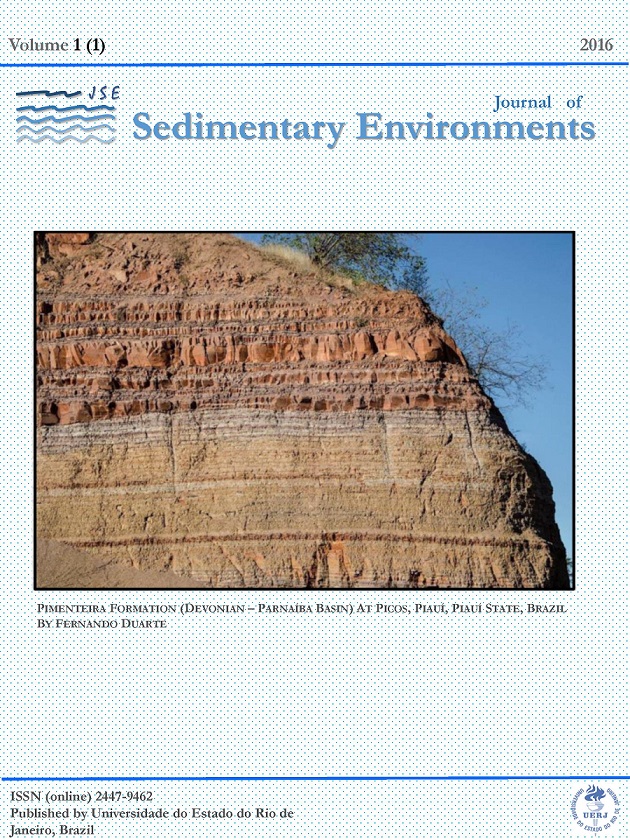REGIONAL OUTCROPS WITH DIDACTIC INTEREST AND SEDIMENTARY FACIES ASSOCIATION OF THE ITARARÉ GROUP AT SÃO PAULO (BRAZIL)
DOI:
https://doi.org/10.12957/jse.2016.21964Keywords:
Geological mapping, Itararé Group, Permo-Carboniferous glaciation, Paleoenvironmental reconstruction, Paraná Basin, Sedimentary faciesAbstract
The main objective of this work is to locate and identify the outcrops considered iconic and valuable as references, not only from the point of view of Cultural or Didactic Tourism, but also in paleoenvironmental reconstruction studies, based on the lithologies that comprise the Itararé Group, in the State of São Paulo, Brazil. This work also intends to relate these sites to outcrops of sedimentary facies, in an area located at south of Itu and Porto Feliz, and north of Sorocaba. The Itararé Group lies within the Paraná Basin (Paleozoic), and is composed by sedimentary sequences associated with the record of the Permo-Carboniferous glaciation event that occurred in the Gondwana supercontinent. This work is based on observations of outcrops in a macro- and mesoscopic scale, considering the characterization of external and internal aspects of the layer, the stratigraphic sequence in the outcrop, and the continuity of the layers within the mapped area. The study area has outcrops where the evidences of glaciomarine deposits predominate. Sedimentary sequences deposited in a subaquatic low-energy environment, as well as episodic deposits, in which relatively more energetic phases alternated with low hydrodynamic conditions are well-developed in the study area. There are also fluvio-deltaic environmental occurrences related to sea level oscillations linked with glacier advances and receding.
doi: 10.12957/jse.2016.21964
Published
Issue
Section
License

Journal of Sedimentary Environments (JSE) is licensed under a Creative Commons Attribution-Noncommercial-Share Alike 4.0 International License.

